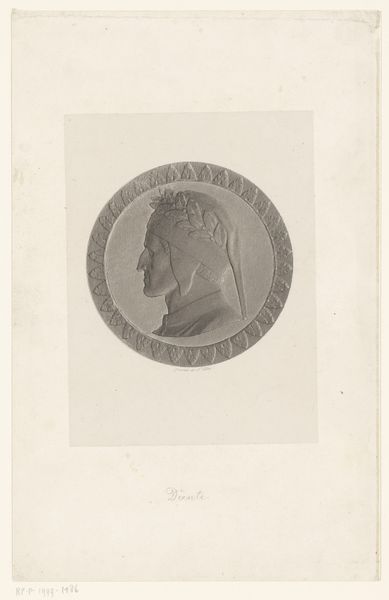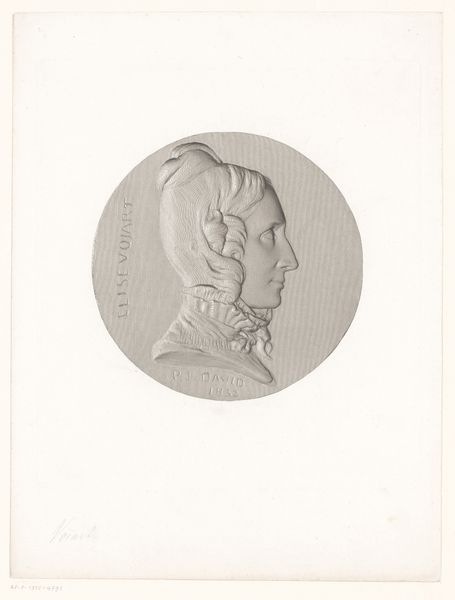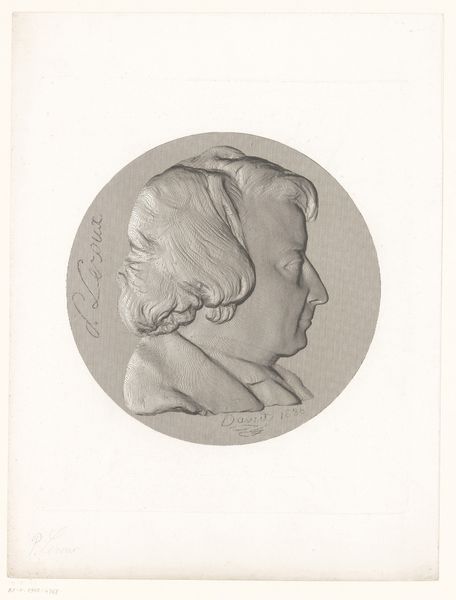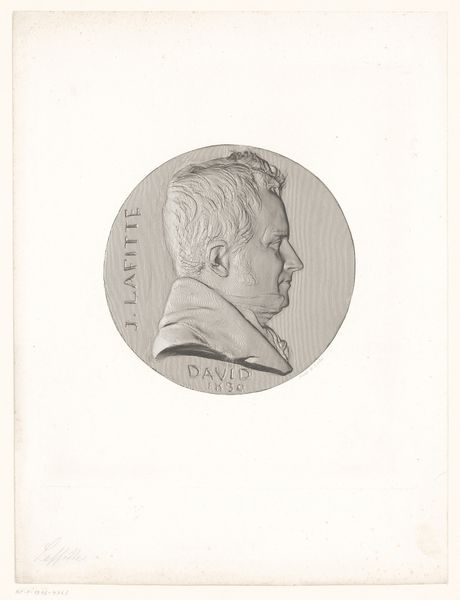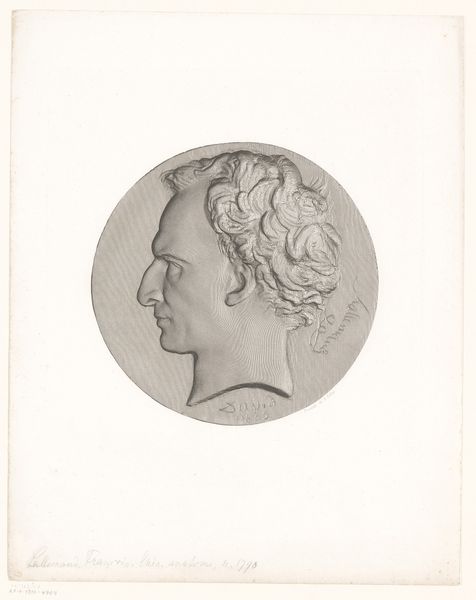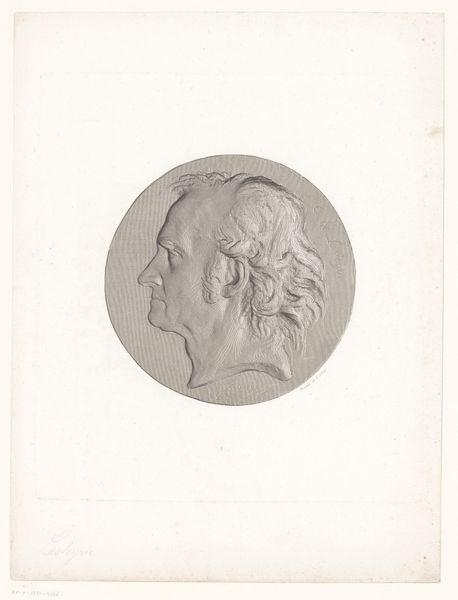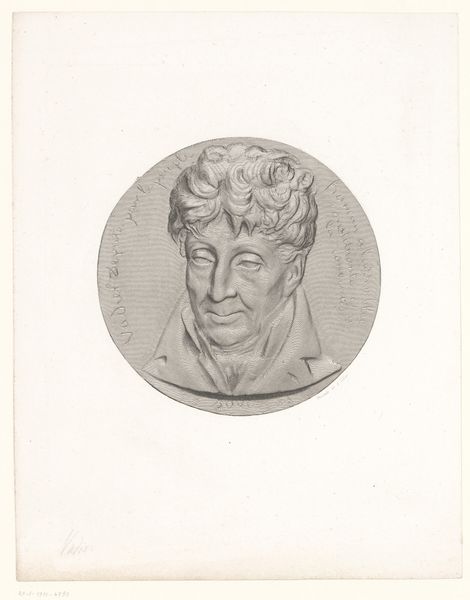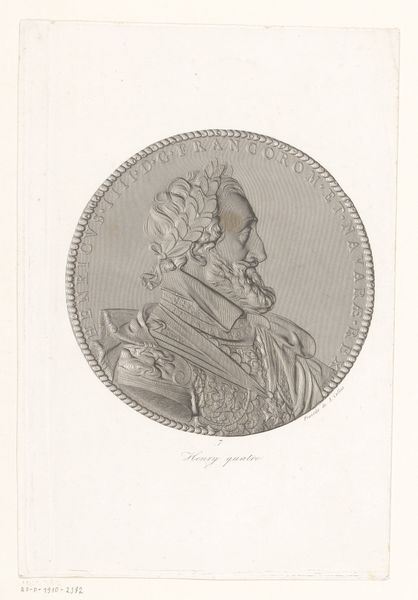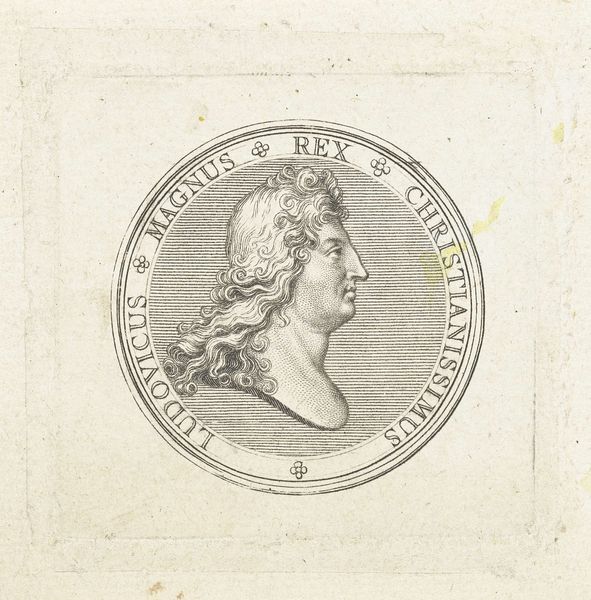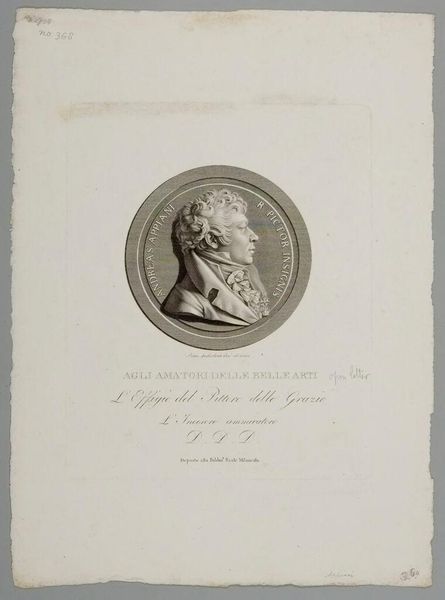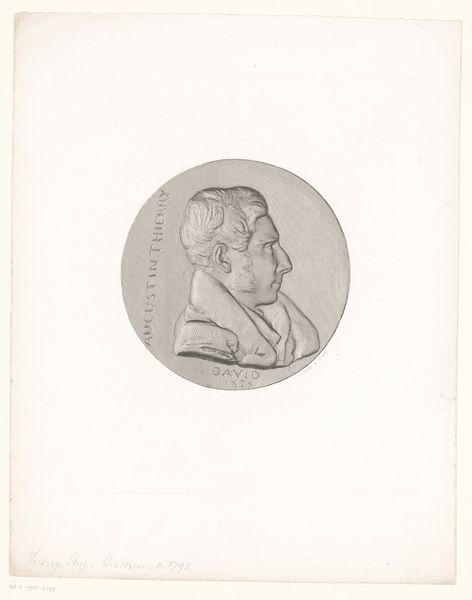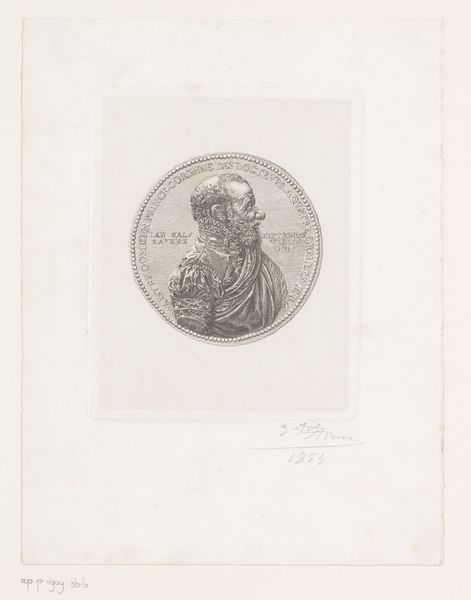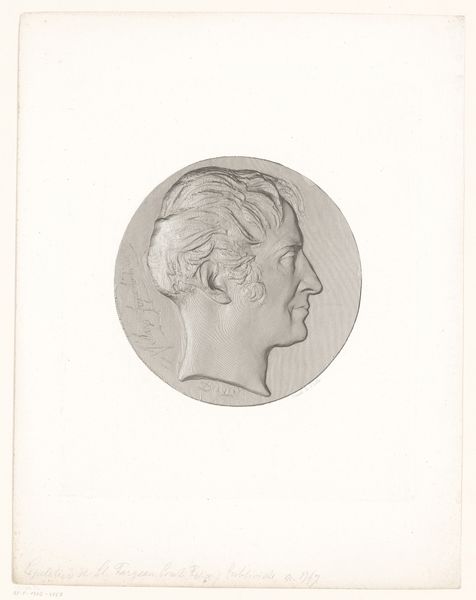
print, engraving
#
portrait
#
neoclacissism
# print
#
old engraving style
#
classical-realism
#
history-painting
#
engraving
Dimensions: height 251 mm, width 217 mm
Copyright: Rijks Museum: Open Domain
Curator: Achille Collas created this engraving "Medaille met portret van Jean-Baptiste Kléber" after 1831. It strikes me as a classically inspired piece. What’s your initial impression? Editor: Somber. There's a restrained gravity, a quiet intensity in the subject's gaze. It evokes a feeling of introspection and perhaps a hint of melancholy, don't you think? Curator: Indeed. Technically, the engraving showcases a superb mastery of line and form, characteristic of Neoclassical portraiture. Note the clean contours, the idealized features, and the subtle gradations of light that model Kléber’s face, emphasizing its sculptural quality. Editor: It's more than just technique, though. Kleber, a general in the French Revolutionary Wars, met a violent end in Cairo. Viewing this image post-revolution adds layers of meaning. Was this glorification or memorial? A complicated dance around revolutionary heroes and their messy legacies. Curator: An interesting point. One could certainly see this as a re-presentation after his controversial assassination. But focus on the classical elements. The subject's presentation in a circular format—a ‘medaille’—invokes the visual language of ancient Roman portraiture, connecting him to a lineage of esteemed leaders. Editor: Sure, and the idealization flattens complexities inherent to revolutionary figures. Collas' engraving reduces him to a symbol. Yet it brings forth contemporary discussions of monuments: who is remembered and why? Curator: Precisely. The work functions both as an homage and as an art object. The circular frame neatly contains the complexity of his narrative within the controlled visual vocabulary of Neoclassicism. Editor: And these layers reveal an enduring challenge in remembering revolutionary figures: to what extent can – or should – art celebrate the individual without whitewashing the circumstances around them? Curator: Food for thought. Ultimately, the artwork remains a striking piece that operates successfully within its formal parameters. Editor: Agreed. It leaves us considering how history and memory intertwine, shaping how we perceive both art and its subjects.
Comments
No comments
Be the first to comment and join the conversation on the ultimate creative platform.
